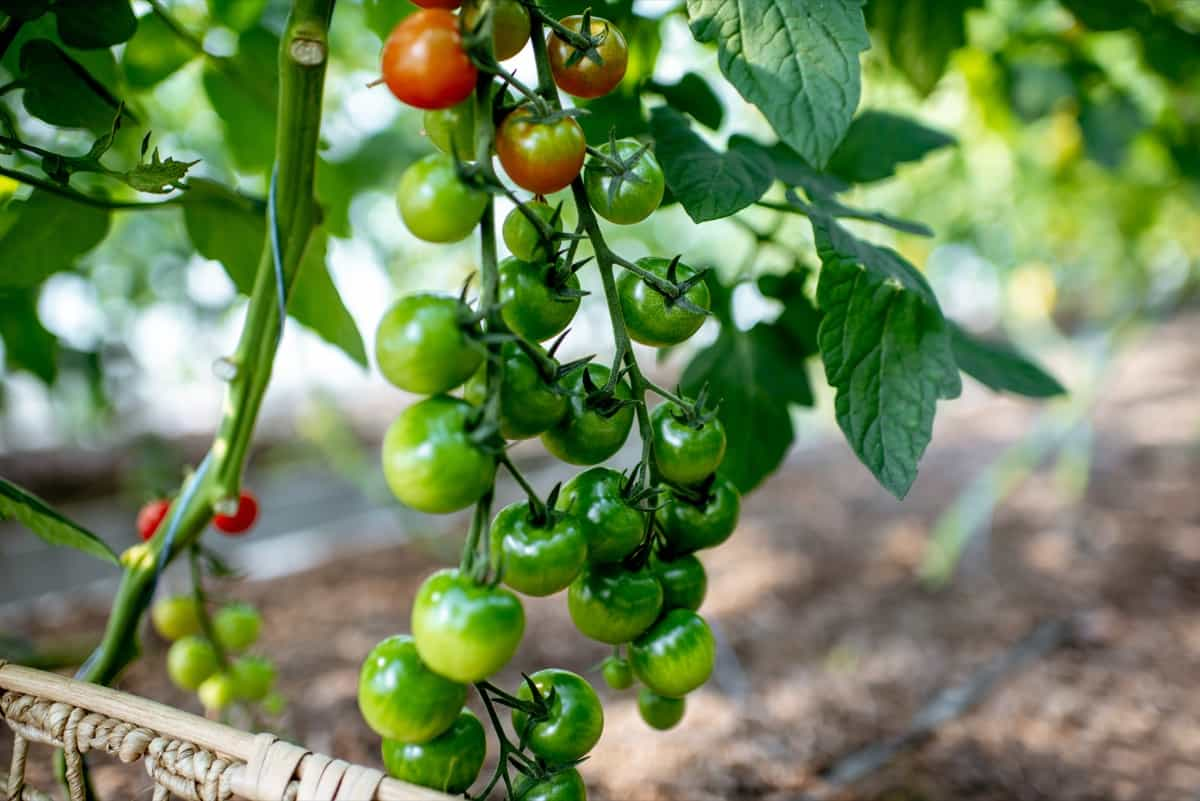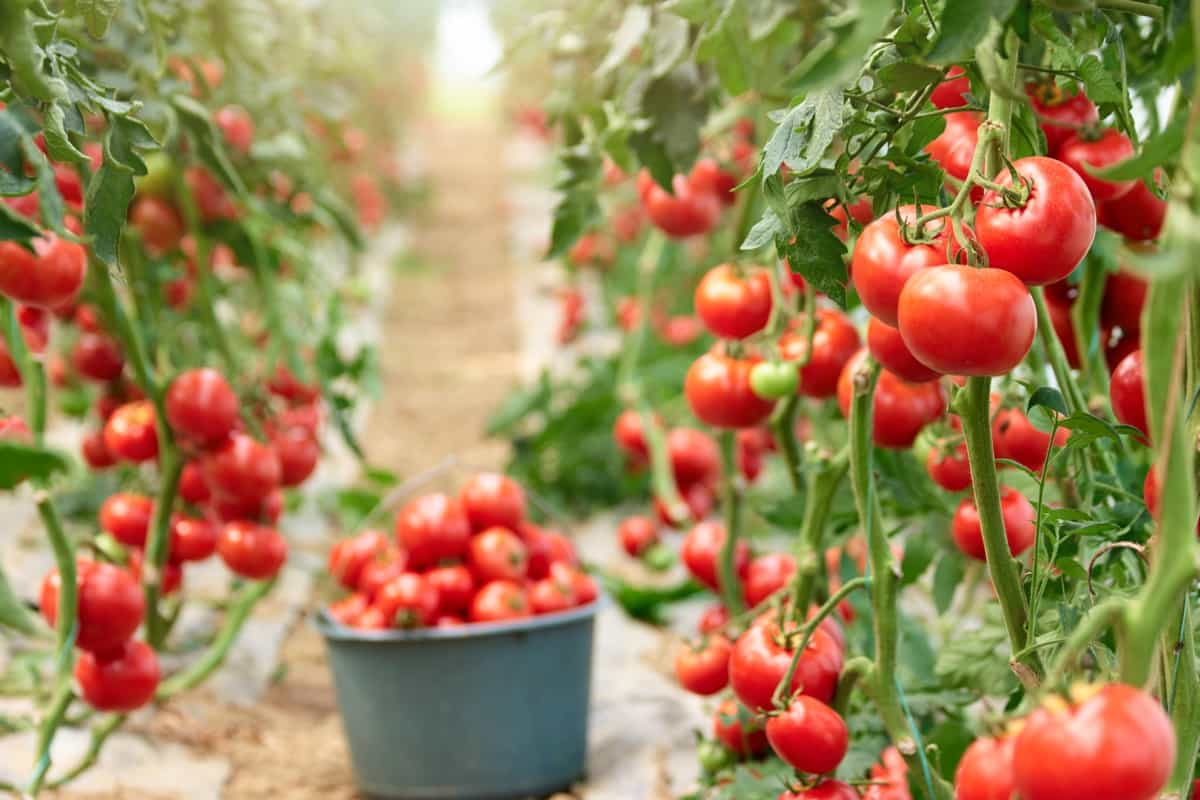A key component of sustainable and abundant tomato growing is the incorporation of cover crops, especially legumes. The benefits of legume cover crops on soil health and tomato yields are examined in this study. Learn about the benefits this farming method has for the environment and how it helps produce tomatoes more sustainably and fruitfully.

Tomato Farming with Cover Crops
Introduction to Tomato Farming with Cover Crops
While growing tomatoes is a rewarding activity with great yields, certain difficulties are involved, such as keeping the soil healthy and controlling pests. Legumes, in particular, have become important cover crops in tomato farming. These cover crops are essential for increasing soil fertility, lowering insect pressure, and raising crop yields. This blog will discuss the importance of cover crops—legumes in particular—and how best to incorporate them into tomato growing for the best outcomes.
Importance of Cover Crops in Tomato Farming
A key element of sustainable agriculture is cover crops. These plants are grown for the benefit of the soil, and the crops are planted in rotation with them rather than for direct harvest. There are several benefits of using cover crops in tomato cultivation. They promote nitrogen cycling, inhibit weed growth, strengthen soil structure, and reduce erosion. Furthermore, cover crops add to the soil’s organic matter content, which increases its fertility and moisture-holding capacity.
How Legumes Improve Soil Health and Yield in Tomato Farming
Legumes, such as clover, peas, and vetch, significantly improve soil health and tomato crop yields. They engage in a symbiotic relationship with nitrogen-fixing bacteria, allowing them to extract atmospheric nitrogen and convert it into a form that plants can absorb. This nitrogen source supports tomato plant growth and fruiting. Legume cover crops enhance soil fertility by providing nitrogen and organic matter as they decompose.
This results in healthier, more vibrant tomato plants less reliant on synthetic fertilizers. Legume cover crops also improve soil structure and aeration, creating a favorable environment for tomato roots to access essential nutrients and water. Also, legume cover crops encourage good microbial communities that break down soil and make nutrients available. They also protect against soil-borne diseases and improve the health of the soil as a whole.
Suitable Legume Cover Crops for Tomato Farming
Consider the growth circumstances and region-specific needs when choosing legume cover crops for tomato gardening. For example, cowpeas grow best in warmer climates, but crimson clover is a great choice for temperate climates. Colder areas are ideal for winter peas. These selections guarantee that the legumes will develop quickly and offer the desired advantages.
In case you missed it: Summer Tomato Farming: Instructions to Grow Tomatoes in the Hottest Months

Climate Suitability
- Crimson Clover: Crimson clover (Trifolium incarnatum) is well-suited to temperate climates with mild winters and moderate rainfall.
- Cowpeas: Cowpeas (Vigna unguiculata) are heat-tolerant legume cover crops, ideal for warmer regions with hot summers.
- Hairy Vetch: Hairy vetch (Vicia villosa) is a versatile legume cover crop that can adapt to various climates.
Planting Techniques for Legume Cover Crops in Tomato Farms
By adding the right rhizobium bacteria to legume cover crops, you can make them better at fixing nitrogen. This allows legume plants to form nitrogen-fixing nodules on their roots, maximizing atmospheric nitrogen utilization. Intercropping legume cover crops with tomato plants can efficiently maximize land use and promote a diverse agricultural ecosystem.
No-till farming is popular for incorporating cover crops into tomato farming, minimizing soil disturbance and disruption. This method allows legume cover crops to be planted directly into the untilled soil, reducing erosion and maintaining soil health.
Nutrient Cycling and Soil Fertility Benefits of Legume Cover Crops in Tomato Farming
- This nitrogen fixation process allows legumes to accumulate significant amounts of nitrogen in their plant tissues.
- When the legume cover crop dies, is terminated, or is incorporated into the soil, the stored nitrogen is released back into the soil in a plant-available form.
- Reduced Synthetic Fertilizer Dependency: By integrating legume cover crops into the tomato farming system, farmers can reduce their reliance on synthetic fertilizers.
- The nitrogen-rich residue from the legume cover crop is an organic, slow-release fertilizer for tomato plants.
- Adding more organic matter to the soil makes it better at holding water, supporting microbes, and maintaining its overall structure. This makes it a better place for tomato roots and other beneficial soil organisms to live.
- Disease Control and Soil Health: Adding legume cover crops to the soil releases organic matter, which makes the soil healthier and less likely to get diseases.
Weed Suppression and Pest Management with Legume Cover Crops in Tomato Farms
Weed Suppression
Dense Canopy and Competition: With their vigorous and dense growth, legume cover crops create a canopy that shades the soil underneath. Weeds require sunlight for photosynthesis, and the reduced light availability due to the legume cover crop’s canopy inhibits weed germination and growth.
Allelopathy: Some legumes exhibit allelopathic effects, releasing natural compounds that inhibit weed growth. These compounds can suppress weed seeds, reducing the weed seed bank in the soil. This allelopathic action contributes to effective weed management in the tomato farming system.
In case you missed it: How to Grow Tomatoes from a Tomato in 10 Simple and Easy Steps

Organic Mulch: When legume cover crops are terminated and left as mulch on the soil surface, they create an organic barrier that hinders weed emergence.
Pest Management
- Increased Biodiversity: Legume cover crops promote biodiversity in the agricultural ecosystem.
- Reduced Pest Habitats: The dense growth of legume cover crops also limits the availability of habitats and food sources for certain pests.
- Improved Soil Health: Legume cover crops enrich healthy soil, supporting stronger and more resilient tomato plants.
Integrating Legume Cover Crops into Crop Rotation Systems for Sustainable Tomato Farming
Crop rotation with legume cover crops improves soil health, disease suppression, and nutrient cycling, ensuring long-term productivity and healthy tomato crops. Legumes improve soil fertility through nitrogen fixation, increase organic matter content and structure, reduce disease pressure, and promote sustainable farming practices.
They also contribute to nutrient cycling by enriching the soil with bioavailable nitrogen, reducing dependency on synthetic fertilizers, and reducing weed competition. Legumes also prevent erosion as their dense root systems hold soil in place, reducing erosion risk during heavy rainfall or wind. This combination leads to higher yields and better-quality tomatoes, improving farmers’ marketability and profitability.
Harvesting and Incorporating Legume Cover Crops in Tomato Farms
Mowing or trimming legume cover crops in flower or a little earlier is recommended to help absorb them into the soil. This time guarantees that the legumes have taken up the most nitrogen possible. After mowing, the cover crop can be tilled into the soil or left as mulch. It is possible to leave the cover crop residue on the surface in no-till systems, protecting the soil from erosion and suppressing organic matter and weeds.
Frequently Asked Questions (FAQs) on Tomato Farming with Cover Crops
Why Is Crop Rotation Important in Tomato Farming?
Crop rotation is crucial in tomato farming as it helps break disease cycles, improve soil health, and reduce the buildup of pests and pathogens specific to tomato plants. By rotating crops, farmers can maintain long-term soil fertility and enhance the sustainability of their farming practices.
What Are the Benefits of Integrating Legume Cover Crops into Crop Rotation For Tomatoes?
Integrating legume cover crops provides multiple benefits. Legumes improve soil health through nitrogen fixation, add organic matter, enhance nutrient cycling, and suppress weeds. Additionally, they disrupt disease cycles and contribute to environmentally friendly and sustainable farming practices.
How Does Crop Rotation with Legume Cover Crops Reduce the Need For Synthetic Fertilizers In Tomato Farming?
Legume cover crops fix atmospheric nitrogen into the soil, thus reducing the need for synthetic fertilizers. This lowers input costs and minimizes the environmental impact associated with the excessive use of synthetic fertilizers.
Can Crop Rotation with Legumes Help Control Tomato Diseases?
Yes, crop rotation with legume-covered crops can help control tomato diseases. It disrupts the life cycles of soil-borne pathogens, reducing disease pressure on the tomato crop. This particularly benefits organic and sustainable farming practices that minimize chemical disease management.
In case you missed it: Integrating Cover Crops Into Vineyard: Types and Benefits

How Do Legume Cover Crops Promote Sustainable Tomato Farming Practices?
Legume cover crops help tomato farming last longer by making the soil healthier, increasing the cycling of nutrients, lowering the number of pests and diseases, and lowering the need for synthetic inputs. These practices align with eco-friendly and economically viable farming methods while maintaining long-term soil fertility and crop quality.
Conclusion
legume cover crops offer a host of benefits for tomato farming. They improve soil health, boost yields, enhance nutrient cycling, suppress weeds, and aid in pest management. By integrating legumes into your tomato farming practices, you can enjoy healthier and more productive tomato crops while supporting sustainable and environmentally friendly agriculture.
- Feed Your Flock for Less: Top 10 Tips to Save on Chicken Feed
- Ultimate Guide to Ossabaw Island Hog: Breeding, Raising, Diet, and Care
- Hatching Answers: The Top 10 Reasons Your Chickens Aren’t Laying Eggs
- Eggs and Economics: Breaking Down the Cost of Raising Backyard Chickens
- Defend Your Greens: Proven Methods to Keep Iguanas Out of Your Garden
- Ultimate Guide to Cinnamon Queen Chicken: A Comprehensive Guide for Beginners
- Ultimate Guide to California Tan Chicken: Breeding, Raising, Diet, Egg-Production and Care
- Ultimate Guide to Marsh Daisy Chicken: Breeding, Raising, Diet, and Care
- 10 Types of Chicken Farming Businesses You Can Start for Profits